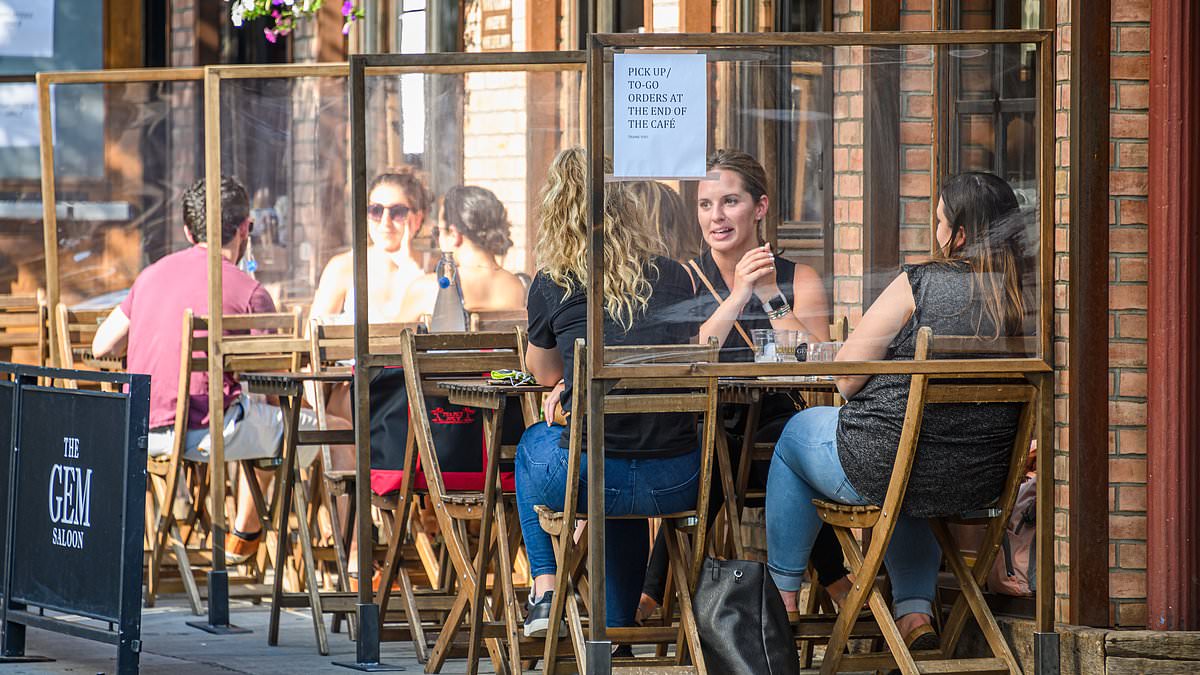One of the only ‘silver linings’ to emerge from the COVID-19 pandemic is disappearing from major US cities, including New York, Boston and Philadelphia.
Four years ago, restaurants put up temporary structures on the curbs in front of their buildings in a fight to stay in business amid restrictions and overall uncharted territories.
Even after restrictions were lifted and cities returned to normalcy, the ‘streetery’ scene seemed to remain intact.
Lincoln Restler, a New York City Council member for north Brooklyn, told Slate: ‘Outdoor dining was one of the true silver linings of the pandemic.
‘On a dime, we reimagined large swaths of our streetscape, kept restaurants and bars afloat, protected and preserved the hospitality industry while making New York City so much more dynamic.’
But these tokens of resilience turned city staples are now disappearing – sparking shock and outrage among diners and business owners.
Expensive up-keep, redlining and parking limitations have all factored into the decline in those COVID-era structures.
The program, called Dining Out NYC, only always for ‘Roadway cafes’ seasonally, from April 1 to November 29. At the end of November, these temporary areas will return to parking spaces.
Businesses who did not renew their permits had to due away with their structures by November 1.
The hassle of setting up and ripping down these structures has also deterred businesses from participating.
In February, when the mayor rolled out these plans, Brianna, a manager at Little Ruby’s Cafe in the East Village, told DailyMail.com it will cost the business ‘more to take down and to put back up.’
‘Sidewalk cafes’ are allowed to stay up all year round, but less 3,000 restaurants have applied for this option, compared to 13,000 at its prime, according to city data.
Mayor Eric Adams set new guidelines over the summer to tackle complaints about rodents and filth, the Associated Press reported.
The new plan was marketed as a straightforward way for businesses to participate, but some restaurant owners took it as a bureaucratic roadblock.
‘They’ve found a middle ground to do one thing while saying another thing,’ Patrick Cournot, the co-founder of a Manhattan wine bar, told the Associated Press. ‘They’ve managed us out, essentially.’
Boston also saw a staggering decrease in publicly-spaced dining areas. This summer, 135 restaurants offered them in comparison to 400 in 2021, according to Slate.
In Philadelphia, more than 750 street dining setups filled the city in 2022. As of August, just 26 remain.
Restaurant patrons have been left disappointed by the diminishing dining scene.
Karen Jackson, who was going to eat at a Tribeca restaurant, told the Associated Press in August: ‘Some of [the outdoor dining areas] were really cute.
‘Unfortunately I think the places with more money were able to build the cute sheds and the places that were struggling couldn’t.’
In NYC, renewing permits or securing permanent ones can be costly. A Roadway Cafe or Sidewalk Cafe individually cost $1,050, just as the flat fee.
Some areas have more expensive fees than others, meaning the affordability of outdoor structures is dictated by a restaurant’s location, the Dining Out NYC website revealed.
On X, people shared their sadness as they watched some of their favorite eateries tear down their outdoor areas.
One man wrote about a Brooklyn restaurant: ‘Sad and unnecessary day watching the great dining sheds in front of The Bearded Lady come down. Outdoor dining improved Brooklyn to no end. Ending it makes our city worse for no reason.’
‘Greenpoint’s best bar hut is now once again parking for one. R.I.P.,’ another user posted.
